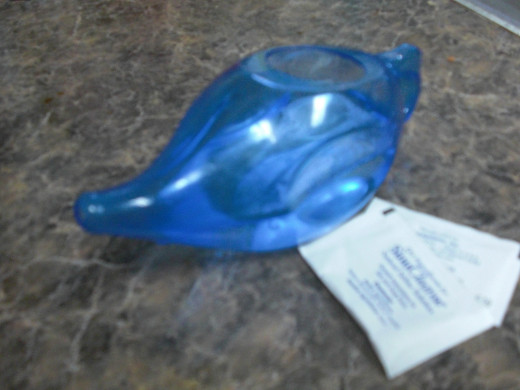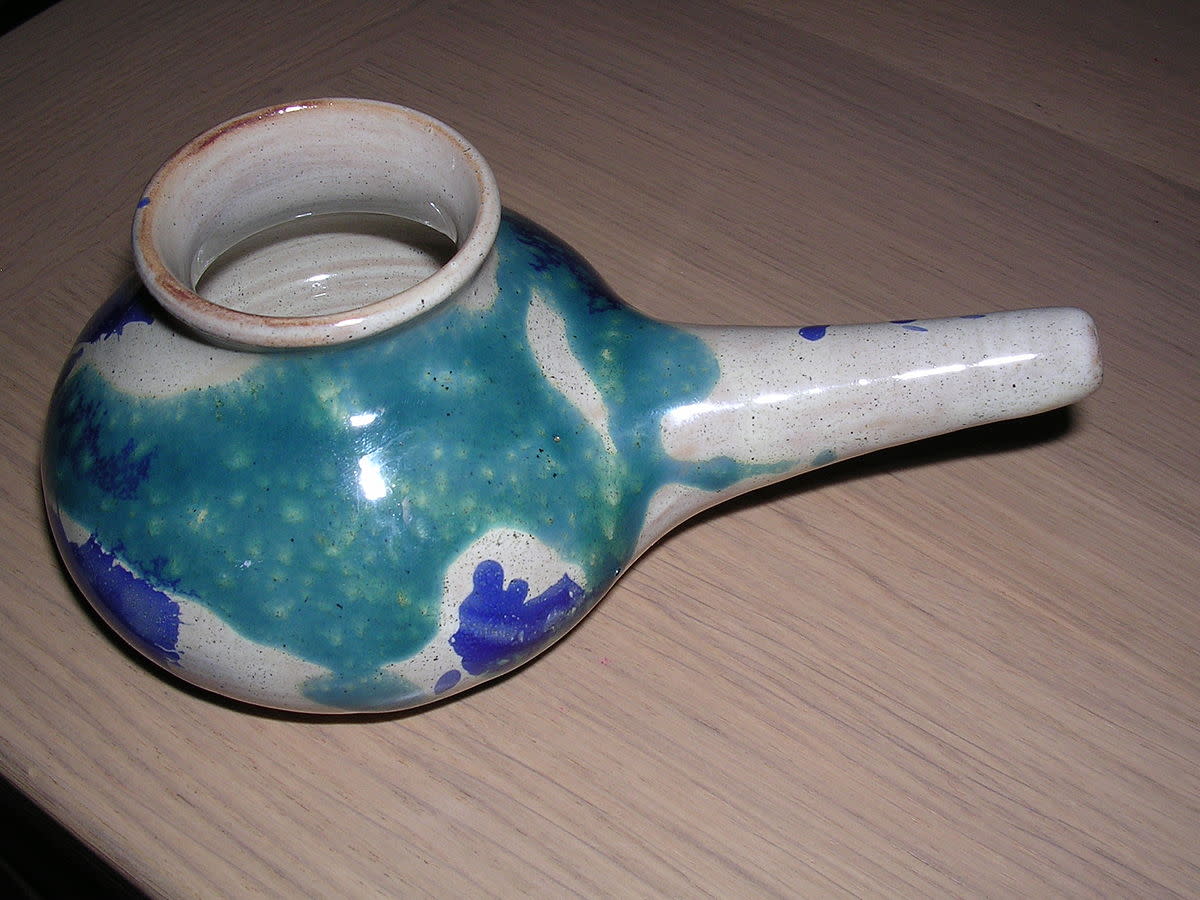What Does a Neti Pot Do?

History of a Neti Pot
Neti pots were first used a few thousand years ago in India by Hindus practicing Ayurveda. Neti actually means nasal cleansing in Sanskrit. They were originally used to cleanse the nasal passages of yogis (professional yoga practitioners). They believed that this cleansed and opened up the breathing passages in order to perform yoga to improve health.
Neti pots have had a resurgence of popularity in recent years. This is due to a desire for a more natural approach to traditional medicine. Individuals who practice natural medicine believe that natural remedies are better on the body. Rather than fill the body full of drugs that can cause side effects and do harm, natural remedies are said to help the body heal itself. As the use of neti pots become more accepted, some physicians are now recommending neti pot use in addition to traditional therapies when patients present with colds or sinus problems.
A neti pot resembles a small teapot or an Aladdin's lamp. It has a handle on one side and a spout on the other with a hole on top in which to pour the liquid in. The very first neti pots were made of clay. Today they can be made out of glass, plastic, metal, ceramic, and even stainless steel. Neti pots are typically filled with a solution of non-iodized salt, sometimes baking soda, and warm water. Neti pots can be purchased at most drug stores. Pre-mixed packets of salt will sometimes be sold with the pot, and efill packets are also able to be purchased. The saline mixture can be made at home as well with ingredients found in most kitchens.
Have You Ever Used A Neti Pot?
Does a Neti Pot Help Cold Symptoms?
How are Neti Pots Effective? Well, our nasal canal and cavities are lined with small hairs called cilia. Cilia wave back and forth to help move mucus or irritants out of these cavities. When we have a cold, the cilia slow down and are not able to clear the mucus out of our passages. Our nasal tissues and blood vessels then become swollen with excess fluid. This is how we get a stuffy nose. Use of the neti pot helps thin mucus, prevent nasal congestion, flush out the nasal passages, thus relieving pressure in the sinus cavity. Neti pots have also been reported to alleviate symptoms of the common cold such as sinus headache, sinus pressure, sore throats due to post-nasal drip, and also aid in breathing.
Traditional over-the-counter cold medicines do much the same thing as far as treating symptoms. There may be some side effects such as drowsiness that may occur with use. However, people with high blood pressure and pregnant women are typically discouraged from using these products as they can cause unsafe side effects. Neti pot use has no adverse effect on those with high blood pressure or an unborn child.
Where to Buy the Neti Pot

How to Use a Neti Pot Video
Neti Pot How To
While it may seem daunting at first to use a neti pot, it is really quite simple to use. There are many videos that are available to help guide you. With regular practice, it will become second nature and it will be the first thing you grab when you first start to feel cold symptoms.
- Empty the contents of a saline packet (or use 1 tsp of homemade mix, see below).
- Fill the neti pot with boiled or purified water that is body temperature.
- Mix well until the salt has completely dissolved.
- Lean over a sink with your head bent down as if you are looking directly into the sink. Take the neti pot and insert the spout into your right nostril.
- Breathe with your mouth open. Rotate your head so that the right nostril is directly above the left. Keep your forehead higher than your chin. Raise the handle of the neti pot so that the solution enters the right nostril. In a few moments the solution will come out the left nostril and into the sink. Be sure to not inhale or snort with the nose.
- When the pot is empty, gently blow your nose into a tissue.
- Repeat the procedure for the other side.
Use the neti pot several times a day when your cold is at its worst. When you start to get better, use the neti pot twice a day moisturize the nasal passages and to remove any excess mucus.
Homemade Neti Pot Solution Recipe
Making your own neti pot solution is quite easy and very economical. It costs only pennies to make out of ingredients you likely already have in your kitchen. Simply mix 3 TBSP of baking soda with 1 TSP non-iodized salt. Store in a sealed container. Always use non-iodized salt. Regular table salt can cause irritation to the nasal passages.
CAUTION
It is important to keep the neti pot clean. Always wash with warm soapy water after each use. Also, ALWAYS use purified or boiled water in the neti pot. Never use tapwater. There have been a few reports of death from the use of a neti pot in the past few years, however this is due to the contaminated water that was used. The amoeba that can be present in common tapwater can be killed simply by boiling the water.






